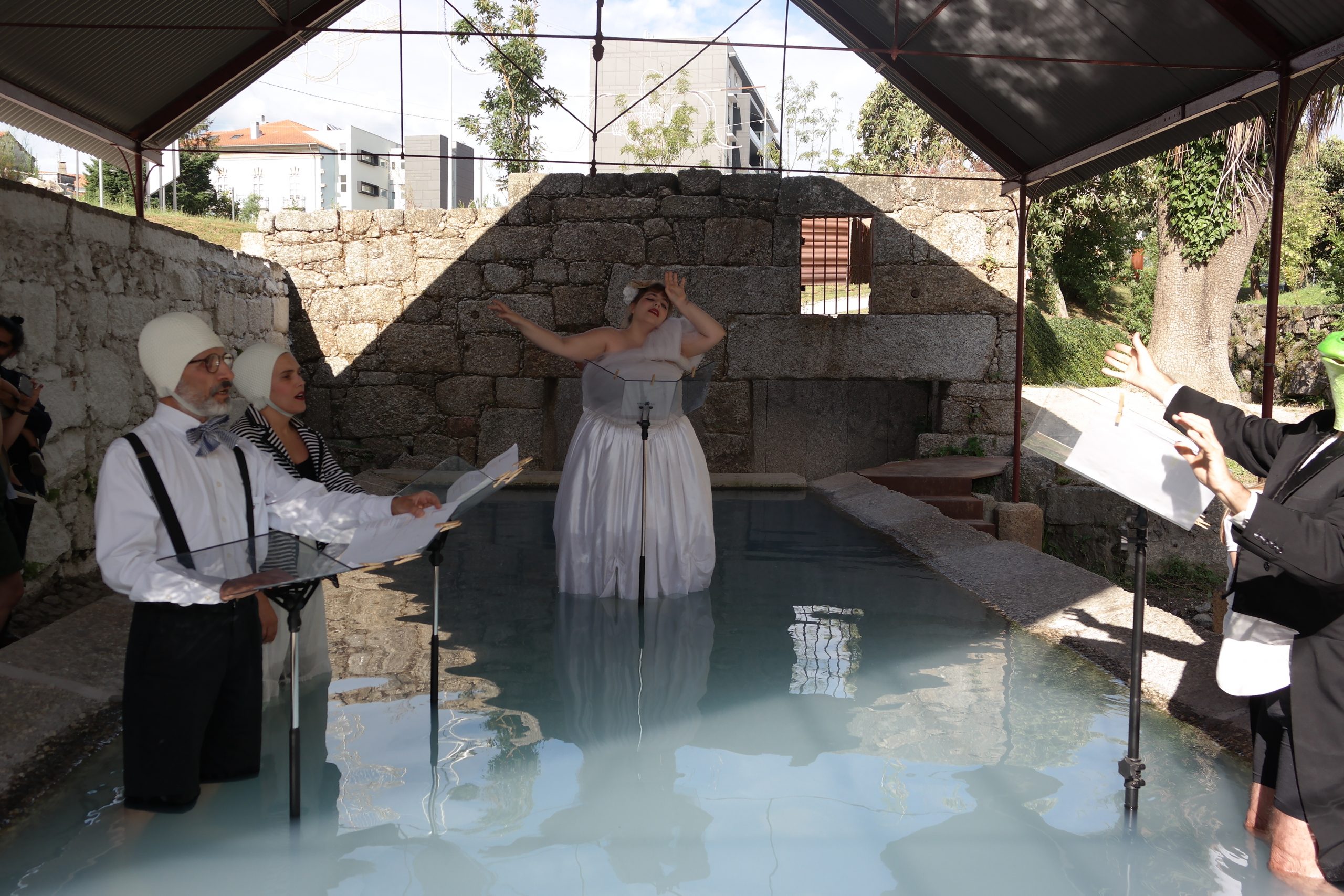“Community is produced through our recognition that we have no ‘substantial identity’ (and our consequent realization that this lack of identity must in fact be shared by others)”. (Kester, 2004: 155)
Socially engaged art, also described as collaborative, community, participative, intervention, political, dialogical, etc., is an alternative method of practice aiming for elementary (and often local) correction of the negative consequences of the global market on non-market interpersonal relationships. A return to selfless cooperation and interaction in one’s closest surroundings is often outside individual andpublic interest unless it conforms to the conditions of returnable and profitable investment. Alienation, hand in hand with continuing individualisation (they are virtually synonymous), are among the significant elements of our liberal present, and often form the first barrier on the path towards cooperation and community work. This shortage of non-commercial interpersonal cooperation, however, also creates a natural counter-reaction. Artists become more interested in interpersonal relationships and society. The process of creation-collaboration currently places a much greater emphasis on moral rules and the equality of the participants (gender, authorship, work with an active community or its activisation, equality in decision making) as opposed to the participants’ more limited and non-authorial work under the supervision of the author as we know it from the past (up to about the 1990s). The idea of the artist as a master of their trade is a traditionally modernist one. Today, the emphasis is shifting to the resultant effect in finding solutions to real social problems and to an open-ended process rather than the work-in-itself. This kind of practice, however, is in sharp opposition to the production of art of a definite aesthetic and to art as commodity.
The essence of art is fluid and open to paradigmatic changes. A traditionally visual medium can become a non-visual tool of social change. The tendencies heading outside of visuality itself are more than apparent. The originally aesthetic language of art is replaced by pragmatic non-visual (or partially visual) elements of communication. The aesthetic quality of art enters into a crucial contradiction with the new conception of art as a means of communication, dialogue and change.
“The hegemony of the eye is very strong in our culture, and to challenge the commitment to its ocular-centric, or vision-centered aesthetic, replacing it with a paradigm shift that displaces vision with the very different influence of listening, is to open oneself up to the complaint that what is being described here is not art at all, but environmental activism, or social work.” (Gablik, 1998)
Visuality represents the qualities of the work which are attractive and easily marketable. There is a clear relation here between the non-visual and the non-commercial, and also between the visual and market exchange. In any case, optically attractive works that are engaged in any way are very successful on the art market and in the media.
In her work The Social Turn: Collaboration and its Discontents, Claire Bishop speaks of the complicated relationship between the engaged artist and aesthetics: “More significant is the tendency to view the aesthetic as (at best) merely visual and (at worst) an elitist realm of unbridled seduction entirely complicit with spectacle. Simultaneously, it is also argued that art is an independent zone, free from the pressures of accountability, institutional bureaucracy, and the rigours of specialisation”. (Bishop, 2006)
By the very essence of its working methods, i.e. non-elitist cooperation which allows work in a community, engaged and collaborative art is in contradiction to art marketing and the products of human activity in general. Art and its distribution to the people (marketing) was one of the mainconflict areas in the countries of the disintegrating Eastern Bloc, and it was also present at the birth of radicalising tendencies in Russian actionism. The collaborative projects mentioned by Claire Bishop are marked by “(…) they work against dominant market imperatives by diffusing single authorship into collaborative activities (…)”
Authorship, today the artist’s elite domain, also representing his right to freedom of speech – a right interpreted almost as superior to the freedom of the ordinary citizen – is endangered by collaborative art. It is not a problem, however, to “correctly” assess this loss of authorship and thus “render” the collective work a product with market value, not even noticing what the artistic collective’s intention was.
As if the art market ignored the existence of art which is at odds with the market. This could easily be understood by laymen. Art theorist Boris Groys has a similarly skeptical view of the art market whilst also denying the absolute independence of art.
Creation for the art market – these days, common and expected – is criticised by engaged art, so the denial of commercial principles (it follows) doesn’t have to lead to a paradoxical success on the art market. In many more radical cases, it is about the creation of a parallel, “shadow” world (of art), which exists on the basis of sharing, cooperation, and collectivism (see Chto Delat). Maria Lind presents a vision of a separation of engaged art from official art in the EU in her article “The Future is Here”. The cultural politics of the Union and the pressures of the self-regulating market do not offer many alternatives, prefiguring the incoming rift in art production. One cannot work as an autonomous creator whilst also looking for a place on the reduced space of possible success.
These are the conditions within which today’s art of engaged action and participation operates, and it remains a question what positions it will hold in the near future, how it will finance its activities, whether it can sustain today’s hybrid financing (public politics and compromise), whether it finds its permanent spot in the language of art criticism, and whether it is capable of influencing anything in its vicinity whilst also influencing the paradigm of artistic practice.
Excerpt from doctoral theses “Information and Identity, Critical Art: Limits and Possibilities”, FAVU, Brno, 2011
Lexa Peroutka is a visual artist, curator and writer focused on critical art practices.




